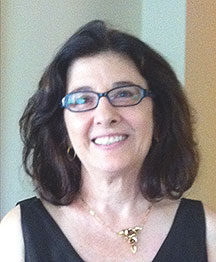I was lucky to meet up with Doug Holder of Ibbetson Street Press recently, who wrote about my good fortune in being selected as a Somerville Arts Council Literature Artist Fellow this year and my efforts toward the 100-year commemoration of the Armenian Genocide. Here’s his article from the Somerville Times. Thanks Doug!

Somerville’s Sarah Ignatius met me on a warm spring morning, at my unofficial office in the backroom of the Bloc 11 Café in Union Square. Ignatius is the Executive Director of the Political Asylum/Immigration Representation Project in Boston, and also a Somerville Arts Council Grant Fellow, who presented a talk and visual presentation at the Somerville Public Library entitled Remembering 1915: The 100-Year Commemoration of the Armenian Genocide. She is also the author of a young adult novel (not yet published) The Devil’s Kaleidoscope. The novel concerns a 14-year-old Armenian boy caught up in the genocide.
 Ignatius has lived in a carriage house in the Union Square section of Somerville since 1992. She was born in Boston, but has lived in many other places. She told me, “I love Somerville, the community events, the special dynamic that the city offers. Some of the homes here are so beautiful, and I love the public spaces.”
Ignatius has lived in a carriage house in the Union Square section of Somerville since 1992. She was born in Boston, but has lived in many other places. She told me, “I love Somerville, the community events, the special dynamic that the city offers. Some of the homes here are so beautiful, and I love the public spaces.”
Ignatius, in her role of the Executive Director of the Immigration Representation Project, helps immigrants from Africa, the Middle East, and elsewhere to achieve asylum in this country. She claims she has a 90% success rate. Prominent law firms like Ropes & Gray and others send their young lawyers to train at the project, and in turn they provide valuable services for asylum-seekers.
The Armenian Genocide, Ignatius’ focus as of late, occurred in 1915 when 1.5 million Armenians were slaughtered by the Turks. Ignatius told me that she was delighted with the Pope’s decision to call the Armenian Holocaust a “genocide,” a word that has been quite controversial as of late. Ignatius’ presentation at the Somerville Public Library consisted of a PowerPoint presentation, along with a slideshow, which is meant for the Armenian and non-Armenian.
Ignatius’ young adult novel, The Devil’s Kaleidoscope, has as a 14-year-old boy as the protagonist, who is caught up in the genocide. According to Ignatius, “The book does not focus on violence, and is geared to promote peace in a world that is often filled with blood lust.” Ignatius said she had a great deal of help with her book from teachers at Grub Street in Boston. And indeed, Ignatius has another novel in the works that concerns two girls, 18 years old, Berkeley, the 70s—well you get the picture.
Ignatius wished me a quick goodbye, because like most of us in the Paris of New England, we always have a lot to do, people to meet, and many miles to go before we sleep.



